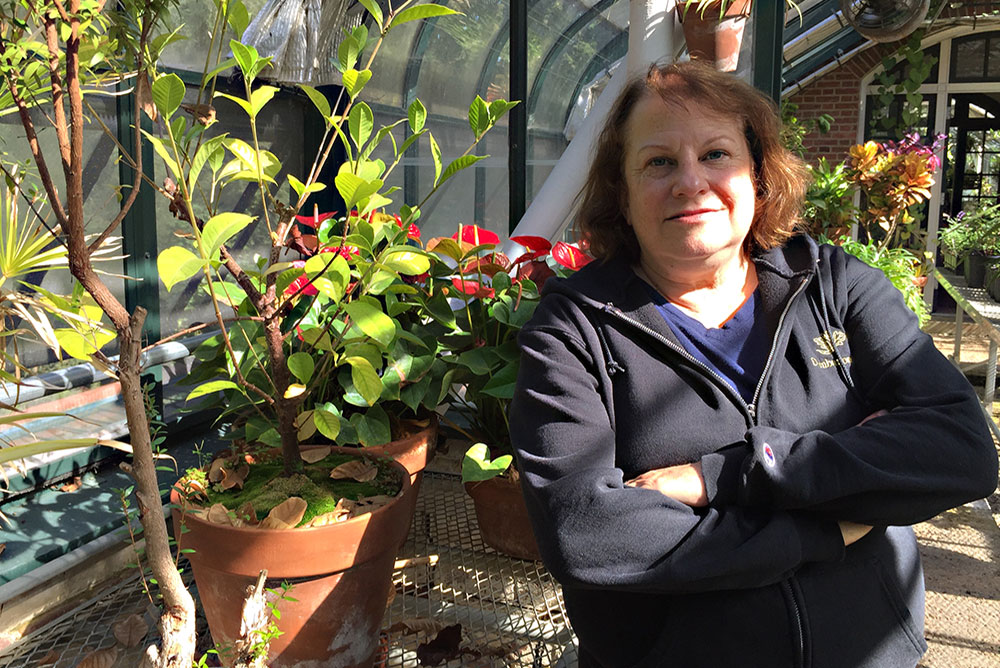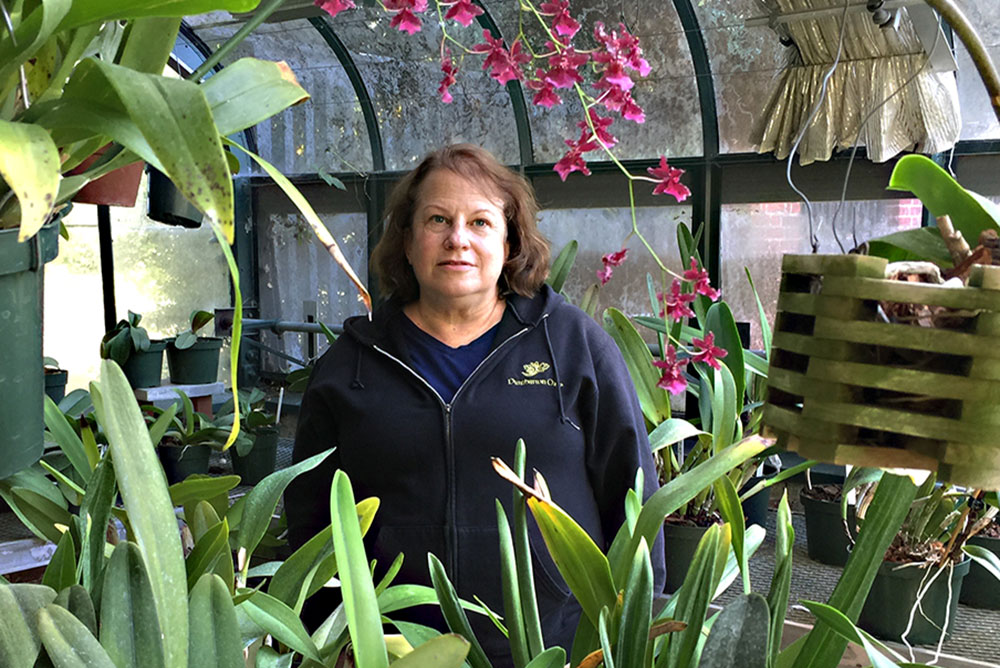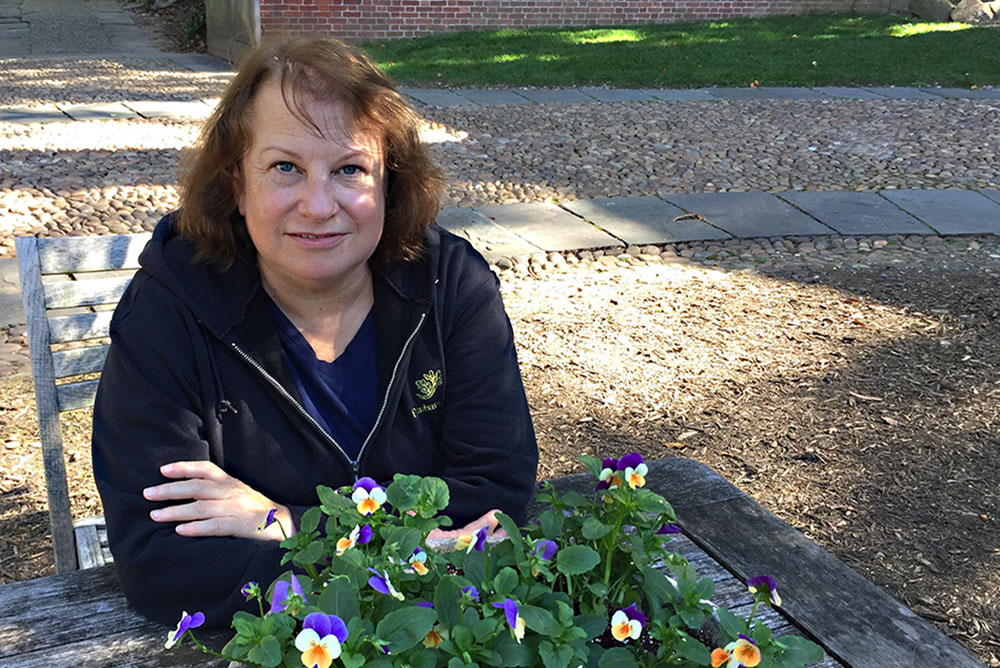Super Women: Melissa Brizer
By Lauren Boston
INSIDE THE orangery at Dumbarton Oaks museum and gardens grows a 150-year-old ficus pumila, a climbing fig, the oldest living house plant in North America. Melissa Brizer’s job is to keep it alive.
No pressure.
The ficus is just one of the plants under Brizer’s care. She first came to Dumbarton Oaks as an art-history student at the now-defunct Mount Vernon College, interning in the archivist office in 1983. The experience left a lasting impression.
“I vowed then that I would end my career at Dumbarton Oaks, and it just worked out that way. If you’ve ever been here, it really gets under your skin. The space is so beautiful, so tranquil, and the garden design is spectacular. It just stuck with me.”
After working as a paralegal for several years, Brizer went to horticulture school and received a general education in everything from trees to shrubs, grass, and propagation—returning to Dumbarton Oaks in 2003 to intern in the garden.
Three years later, while she was working as head gardener at the Embassy of Denmark, Dumbarton Oaks called. They’d just gutted and rebuilt their greenhouse with a state-of-the-art, computerized system, and invited Brizer to return full-time to run the program. She answered with an emphatic yes.
“I’m the grower. I grow the annuals, the vegetables, the chrysanthemums for the fall display. I work in the orangery, which was built in 1811 and is the oldest part of the property. And I arrange all the flowers for the events.”
Much of Brizer’s work is rooted in the legacy of Dumbarton Oaks’s original gardener, Beatrix Jones Farrand. The only female founding member of the American Society of Landscape Architects, Farrand began designing the garden in 1921 with Mildred Barnes Bliss, who had purchased the property with her husband the year prior.
Farrand stepped away from Dumbarton Oaks in the late 1940s, shortly after the grounds were donated to Harvard University, yet Brizer says her influence is still felt in the garden.
“We try to stick to her original plan. We can’t always in this day in age. We have to adapt, and plant a different tree that will grow better in DC’s hot and humid summers, but we do our best. If Beatrix came back today, she would recognize the space.”
Caring for a historic property comes with its share of stressors, and Melissa says the work is as much an art as a science.
“It’s 50-50. You learn the science in school, and trial and error is very scientific. But some of the men I work with grew up on farms in El Salvador, and their skills are incredible. They can read the soil and read the weather, and things I just don’t have running through my veins.”
Technically, every day is a matter of life and death in the greenhouse. Still, Brizer says she’d take that responsibility over any desk job.
“Every job has deadlines and stress, but I have a lot less stress than other friends. I’m outside, I don’t have to wear makeup or heels. I thrive on being outside. In the winter, when everyone else is hiding inside by the fire and drinking a hot toddy, I’m shoveling feet of snow. It speaks to me.”
Brizer finds inspiration year-round, drawn to whatever is blooming at the time. Spring and fall are spectacular, she says—but there’s something particularly spellbinding about the winter, “when there’s nothing to look at but the layout, and the bones of the trees and the walls.”
She’s connected to the greenhouse in a visceral way, made all the more apparent when a recent surgery kept her out of the garden for seven weeks.
“I missed the plants. I missed my orchids. I missed the space.”
When she’s not tending to the plants, Melissa is meeting visitors in the garden, who always have a long list of questions and an infectious passion for the grounds. One of her favorite memories was meeting “everyone’s garden guru,” Martha Stewart.
Many of Brizer’s friends and family see her in a similar light.
“I tease my husband that I don’t want to tell anyone what I do, because at every dinner party I get, ‘I have this plant at home. It has green leaves. Do you know what it is? Can you help me?’ All the time!”
Her husband teases, in turn, that the cobbler’s son has no shoes. Brizer’s home garden is as effortless and low-maintenance as possible—whatever energy she has, already expended at Dumbarton Oaks.
In the “muck and the mud,” with mosquitoes in her eyes, Brizer’s job isn’t always roses. And yet, it’s exactly where she always wanted to be.
This piece appeared originally in By George, a blog by the Georgetown (DC) Business Improvement District.





What a fascinating career!